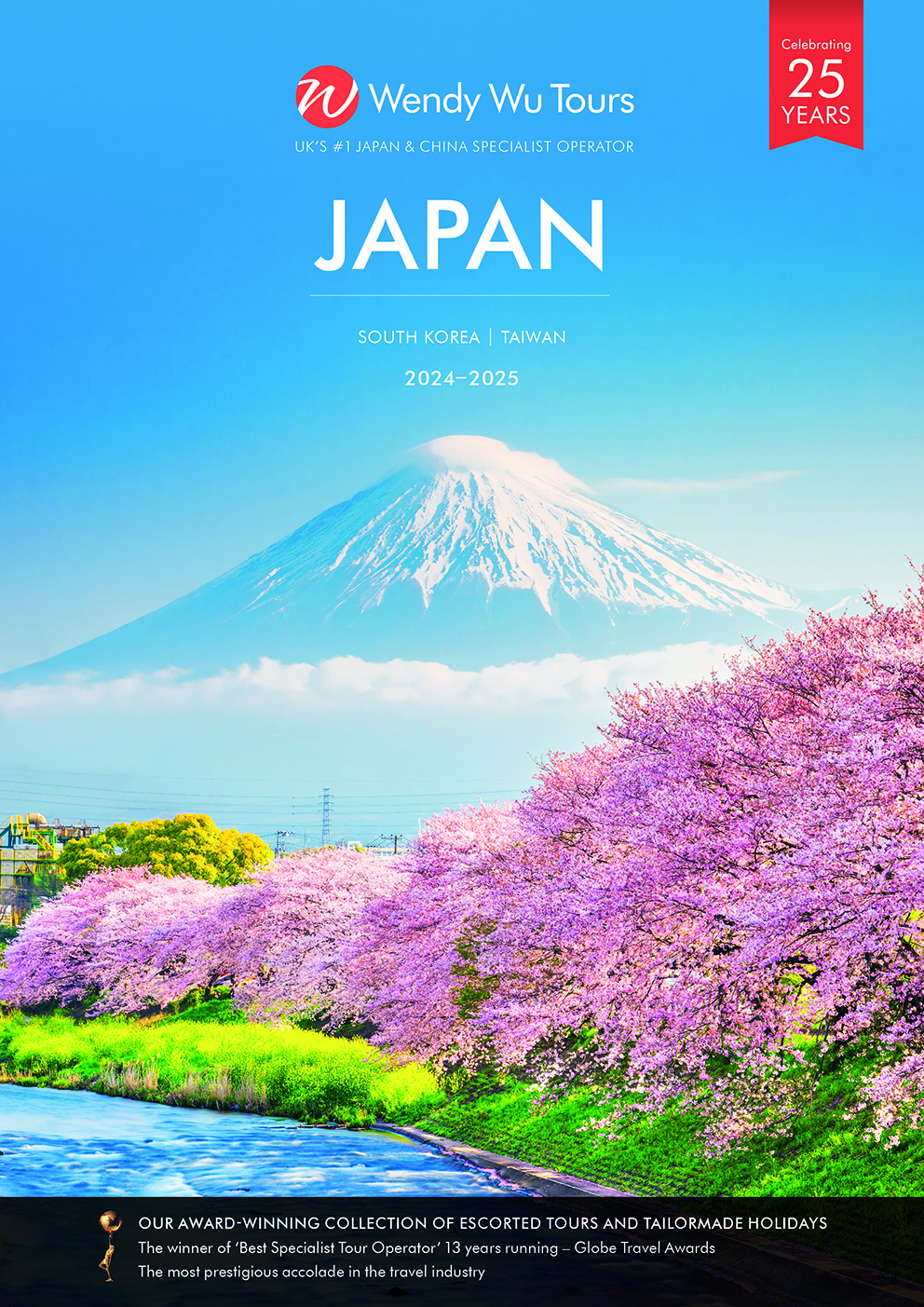Japanese culture, visual aesthetic and philosophical ideas are all interwoven with nature, and nowhere is this more evident than in their beautiful gardens. An age-old practice – there is literature on gardens dating back 1,000 years – the main purpose and layout of a traditional garden is to inspire calmness, and to create an idealised space to contemplate both nature and existence as a whole.
Pretty heavy right? That’s why on the surface, Japanese gardens may look simple and minimalist, but if you dig a little deeper you’ll discover a whole raft of sophisticated meanings, beliefs and values in everything that you see, from the choice of plants to the placement of the rocks.
Come with us on a journey through just some of the complex concepts in this beginners guide to Japanese gardens, so next time you are on your holidays to Japan, you’ll have a greater insight into these timeless and elegant spaces…
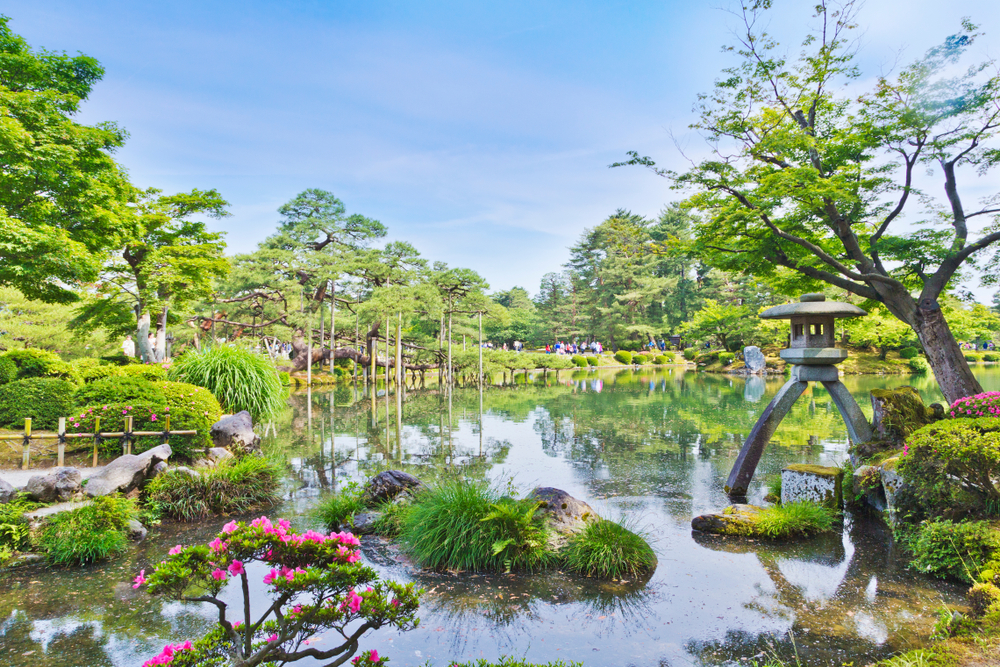
Idealised Nature
The earliest gardens followed Chinese ideals, but over time and the development of Zen and Shinto principles, the Japanese found a distinct aesthetic of their very own. All traditional gardens are designed to evoke meditation, a central teaching of the Zen religion, and a mood of nature appreciation. This is why gardens tend to create an idealised microcosm of nature, with miniature representations of mountains, seas and natural environments. You also want to make the garden look like it has been in situ for a long time, so the use of ‘worn’ items is essential – this weathering represents the fragility of existence and the unstoppable advance of time.
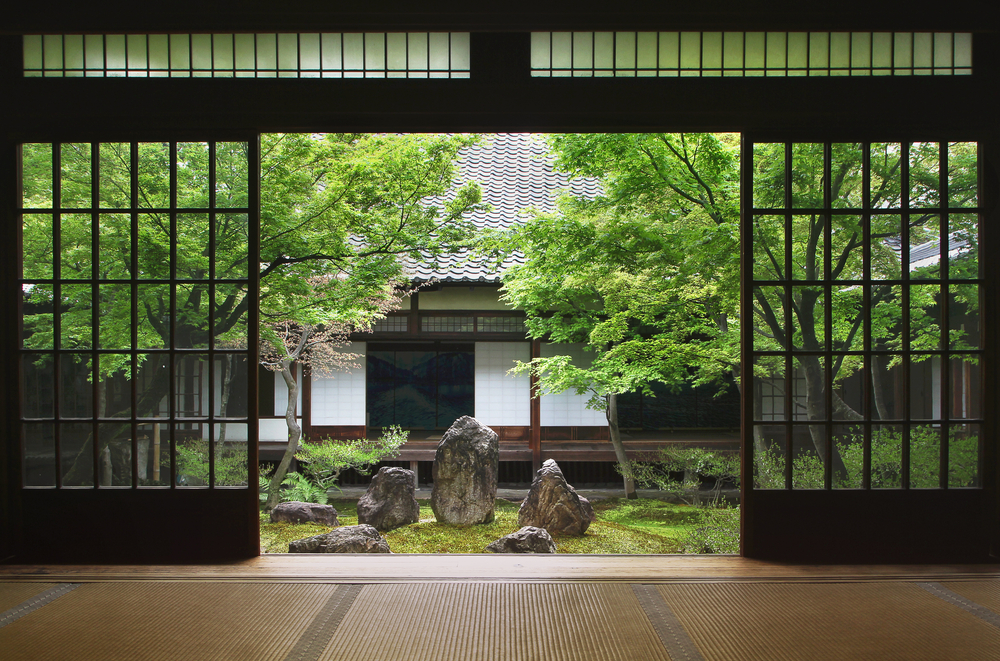
Three Essential Elements
All Japanese gardens include three essential elements – stones, plants and water. As mentioned above, they are used to suggest a natural landscape, but are very thoughtful placed in a layout that will optimise a sense of calmness.
Potentially the most essential element of the three is stone or rock and sand, used to represent sacred mountains, flowing rivers or beaches, the earth or stepping stones. Different types of rocks have different associated meanings and are carefully arranged in groups of two, three, five or seven. All should be firmly placed into the earth as a show of permanence.
Water provides the yin to the rocks’ yang as an opposite that completes and complements. Features such as ponds, streams and waterfalls, bring life and can show both the flow of life and represent the ocean or famous streams and waterfalls, while also providing both literal and figurative reflection to the space.
Plants, mainly trees, are chosen for aesthetic purposes, to provide a backdrop for another feature or to create a picturesque tableau. Not much in a garden is left to chance, so the trees’ growth is carefully controlled and they are often trimmed into attractive shapes to enhance the scene. Evergreen plants are particularly popular as they look the same and feel inspiring year round as well as trees that put on spectacular displays of autumn colours, such as maple and gingko. Bamboo is also popular due to its sound and movement when the wind blows through it.
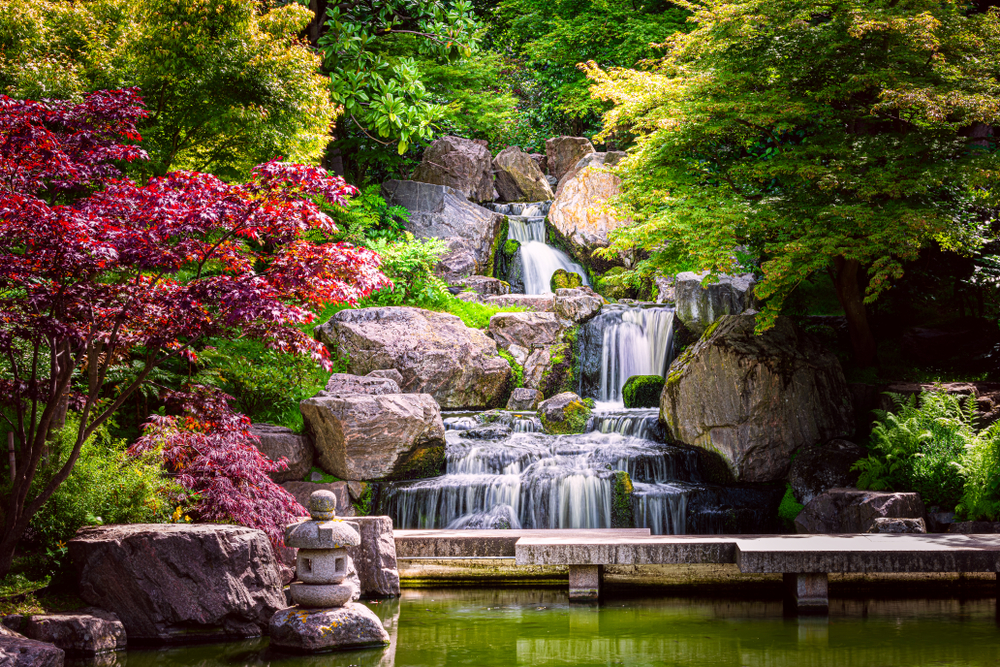
The Garden as a Work of Art
“Though inspired by nature it is an interpretation rather than a copy; it should appear natural, but it is not wild.” Garden historians David and Michigo Young.
In popular culture, the Japanese garden is an embodiment of nature for the creators and carers who have so meticulously planned and placed every single element for the pleasure or spiritual enjoyment of others. In this respect, they should be enjoyed and have meaning assigned to them in much the same way as a work of art.
The seasonal changes that are featured in the images are said to mirror the transitions we all go through over the course of our lives. Through the plants, trees, sand and stones, each element has a spiritual and natural significance.
Gardens are even designed to be seen from a specific point, for example the garden of a Zen temple should not be entered but admired from a seated position on a raised platform overlooking the composition as a whole. In contrast, promenade gardens are designed with a path that takes the wanderer through the scene with points to stop and contemplate, employing techniques to ‘hide and reveal’ the next landscape.
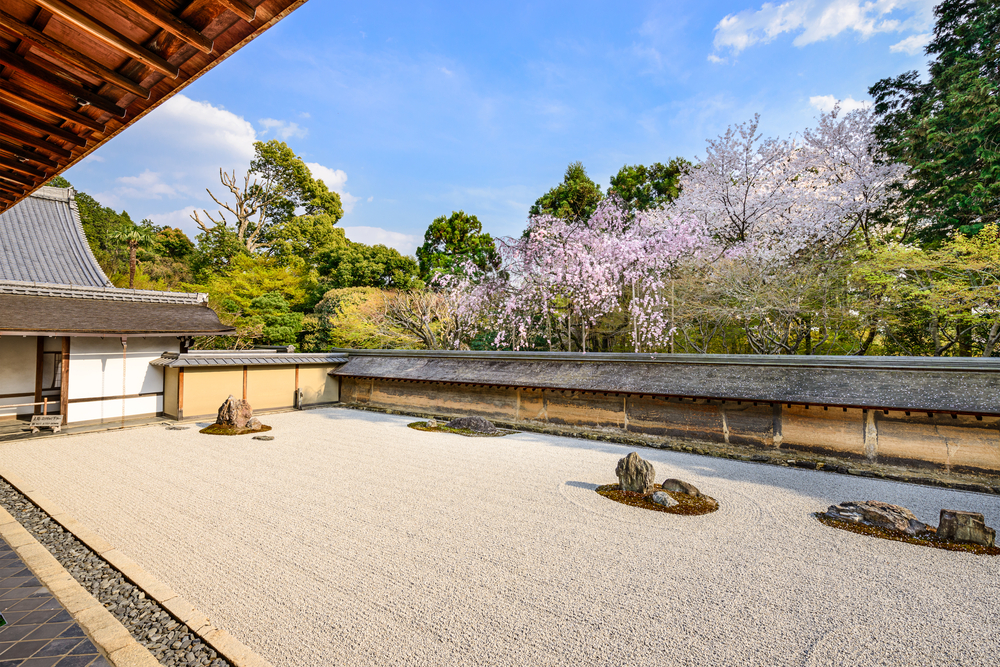
One of the joys of exploring Japan is the incredible esteem in which heritage and past practices are held, something that can be seen in many aspects of daily life, traditions and historical places across the country. Gardens are another great illustration of this ethos, as they reflect a whole series of ideas, beliefs and practice that have long been held by the population. They also offer a fascinating window into history, as it is custom to keep a well-designed garden as close as possible to the original. So when you’re visiting some of the many famous gardens of Japan, such as Kenroku-en and the Zen garden of Ryoan-ji it will likely have changed little over the centuries – a fascinating window into the Japan of times gone by.

Discover Japan
13 days from £5990pp
Fully Inclusive of Tour & Flights
Mount Fuji - Matsumoto Castle - Kyoto's Shrines - Japanese Alps







